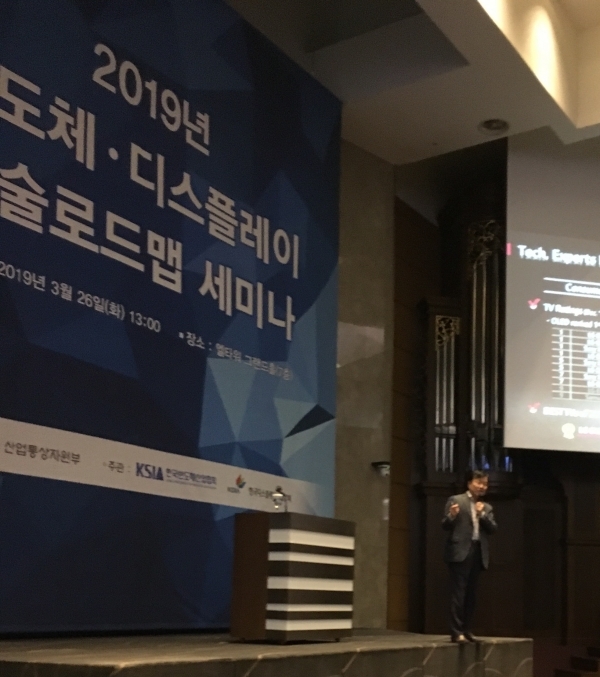
Yoon Soo-Young, Director of Research Center (Executive Director) of LG Display, said, “Ultimately, display technology should advance toward being rollable. The key technologies required for rollable displays are metal foil replacement and transparent polyimide (PI)” at the ‘2019 Semiconductor Display Technology Roadmap Seminar’ held at Seocho-gu El Tower in Seoul on the 26th.
This means that it is possible to mass-produce rollable displays that can be rolled up even in the existing mass production line of WOLED panels by changing the materials. Director Yoon said, "By decreasing the thickness of the encapsulation and removing the substrate glass, you can make a rollable display.”
WOLED panels use metal foil (metal plate) as sealing material. Director Yoon said, "We need to further research materials with soft (bending) qualities." In the past, organic materials in the WOLED panels could be bent. To implement a rollable display, the area surrounding the organic material must also be bent.
LG Display is mass producing WOLED displays using the bottom emission and metal foil encapsulation process. Because it is a backside emission type, the light goes out through the substrate. Because a substrate glass is used in the conventional WOLED panel, the transmittance had not been an issue.
Director Yoon said, "Transparent PI for the substrate must be able to withstand the heat while passing through the oxide thin film transistor (TFT) process" The polyimide (PI) changes its color to light yellow at high temperature. Director Yoon said, "When transparent PI materials are developed, rollable display production is possible in existing mass production lines."
Not only the design changes in WOLED panels have been introduced, but Director Yoon also introduced the new structures for WOLED panels. He said, "We are developing a three stack, three color structure with a 'Blue-Green, Red-Blue' scheme. The brightness and color purity will be improved."
Starting from the mass production of two stacked, two-color WOLED panels of 'Yellow Green-Blue' in 2013, LG Display is currently applying 'Blue-Yellow Green · Red-Blue' three stacks and three colors. The direction of development is to change the middle stack from Yellow Green-Red to Green-Red.
“Unlike the LCD panel, in which the performance improvement of each part leads to the improvement of the overall panel performance, the material, parts, equipment, and panel company must move together as one for OLED panel development,” explained Director Yoon at the end of his lecture on the theme of 'OLED Market and Technology Prospect'.
Since the front-illumination type small-sized flexible OLED panel is top emission that emits light in the direction opposite to the substrate, colored PI is used as the substrate. PI for substrate differs from transparent PI used as a foldable display cover window in properties such as thickness.

